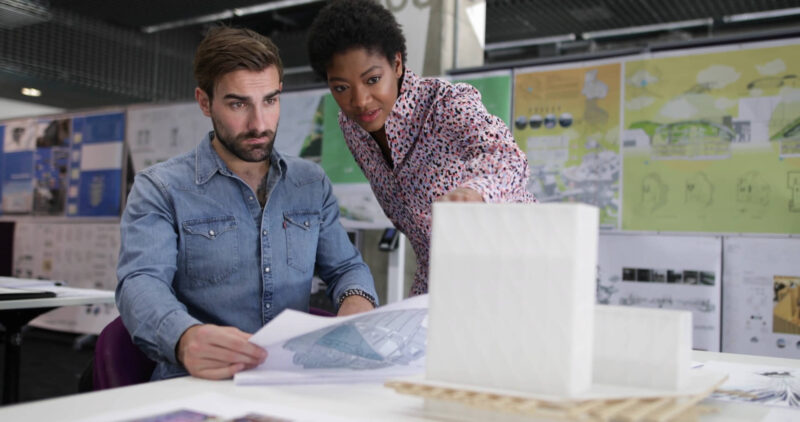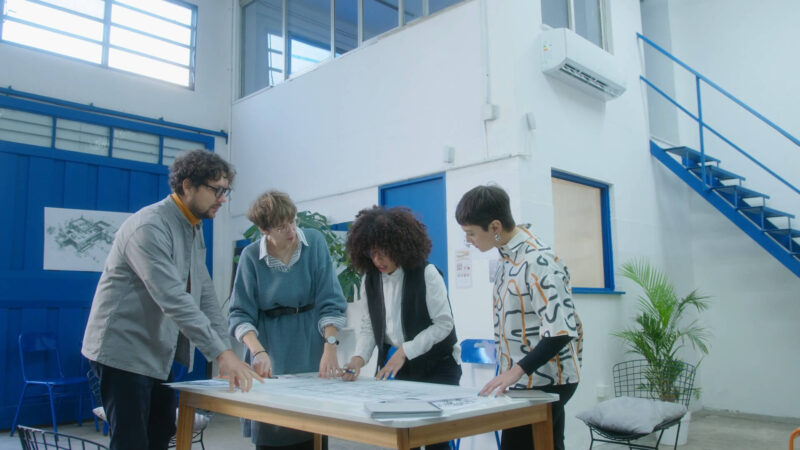Imagine you’re part of a team with a common goal. The way you work together towards this goal can take many forms, some more effective than others depending on the situation. Here, the concepts of collaboration and cooperation come into play, each holding a key to unlocking potential in team dynamics and project outcomes.
But is there a real difference between the two, and why does it matter? Let’s discover the essence of collaboration and cooperation, revealing how understanding these terms can revolutionize our approach to working together.
Key Takeaways
- Collaboration means integrating efforts and ideas, while cooperation represents segmenting tasks among individuals.
- Collaboration emphasizes shared creation, interdependence, flexibility, innovation, and the collective ownership of outcomes.
- Cooperation highlights the division of labor, independence, and efficiency in specific tasks without the need for ongoing interaction.
What is Cooperation?

Cooperation is when individuals or groups work together towards a shared goal, but they do so in a more divided, independent manner. Each person has a specific role or task, and while these tasks contribute to the overall objective, the process is more about individual contributions than mutual engagement.
Think of it as a group of musicians in an orchestra. Each plays their part, but they don’t necessarily influence how others play theirs.
Main Characteristics
1. Division of Labor

Tasks are divided, and each person focuses on their responsibilities. This method allows individuals to hone their skills in specific areas, leading to expertise and mastery over time. By concentrating on a limited set of tasks, workers can increase their efficiency and quality of output, reducing the likelihood of errors.
This approach facilitates scalability, as tasks can be more easily delegated to new team members, allowing for smoother expansion and adaptation to increased workloads.
2. Independence
While there is a common goal, the actual work is done independently. This autonomy empowers individuals to make decisions within their domain, fostering a sense of ownership and accountability. Independence in task execution also allows for flexibility in work methods, enabling individuals to tailor their approach to suit their strengths and preferences.
Moreover, it can lead to increased job satisfaction, as team members can work in a manner that best suits their working style, potentially leading to innovative solutions and improvements in processes.
3. Efficiency in Specific Tasks

It’s great for tasks that require specialization without much need for ongoing interaction. Specialization leads to a deeper understanding of the task at hand, allowing for the development of more effective and efficient working methods.
This focus on specific tasks can also streamline the training process, as individuals need only become proficient in a narrow area of expertise. Additionally, it facilitates a clear measurement of performance and progress, as outcomes can be directly linked to the work of specific individuals or teams.
This clarity can enhance the overall productivity of the project, as it allows for targeted feedback and adjustments to improve outcomes.
What is Collaboration?

Collaboration takes the concept of working together up a notch. It’s not just about sharing goals but also about deeply engaging with each other’s ideas, skills, and processes. It’s a creative and collective process where the inputs and efforts of every participant are intertwined.
Imagine a group of artists creating a mural together, where each stroke can influence or change the direction of the overall masterpiece.
Features
1. Shared Creation

The outcome is built together, with ideas and efforts continuously blending, creating a collective masterpiece that reflects the diverse inputs of all team members. This process fosters a sense of ownership and pride among participants, as each contribution is integral to the final product.
The collaborative environment encourages individuals to put forth their best ideas, knowing that their input will be valued and incorporated. Shared creation also facilitates a learning experience, where team members can gain insights from each other’s perspectives and expertise.
This approach not only enriches the project but also contributes to the personal and professional growth of each individual involved.
2. Interdependence
Success depends on how well the team works together, emphasizing the importance of each member’s contributions towards achieving the collective goal. This reliance on one another fosters a strong sense of community and trust within the team, as members must communicate effectively and support each other’s efforts.
Interdependence ensures that tasks are approached with a collaborative mindset, leading to more cohesive and comprehensive outcomes. It encourages team members to be more accountable for their work, knowing that their performance directly impacts the success of the entire group.
This interconnectedness can lead to a more resilient team dynamic, where challenges are met with collective problem-solving strategies.
3. Flexibility and Innovation
The process thrives on the dynamic exchange of ideas, propelling the team towards innovative solutions that may not have been discovered through individual efforts alone. This environment of openness and adaptability allows for rapid iteration and refinement of concepts, making it possible to pivot strategies in response to feedback or new insights.
Flexibility in collaboration encourages experimentation and risk-taking, which are critical components of the creative process. Innovation emerges naturally from this setting, as diverse viewpoints and expertise converge to push boundaries and explore uncharted territories.
This approach cultivates an agile team that can navigate the complexities of modern projects, adapting to changes and overcoming obstacles with ingenuity and creativity.
Key Differences
| Aspect | Collaboration | Cooperation |
| Integration vs. Segmentation | Integrates efforts and ideas among the team. | Segment tasks among individuals, focusing on specific roles. |
| Interaction Level | Requires a higher level of interaction among team members. | Requires less interaction; work is more independent. |
| Outcome Ownership | The team collectively owns the outcome. | Contributions are more individual, supporting a common goal. |
How to Improve These Concepts in the Workplace?
1. Enhance Communication
Encourage open and transparent communication across all levels of the organization. Implement regular meetings, team huddles, and digital platforms for continuous dialogue. Train team members in active listening skills to ensure that everyone feels heard and valued, which can lead to more effective problem-solving and innovation.

2. Build Trust and Respect
Organize activities that are not just work-related to help build relationships and trust among team members. Value the different backgrounds, skills, and perspectives team members bring to the table, fostering a more inclusive environment.
3. Set Clear Goals and Roles
Ensure that everyone understands the team’s goals, how they contribute to the larger organizational objectives, and the importance of their individual roles in achieving these goals. Clearly define each person’s role and responsibilities to prevent overlap and ensure that all necessary tasks are covered.
FAQs
What methods can managers use to evaluate team collaboration?
Managers can use performance reviews, team surveys, project completion rates, and innovation levels as metrics to assess collaboration.
Why is resolving conflicts important for teamwork?
It prevents disagreements from disrupting teamwork by promoting a positive environment and mutual respect.
Can excessive collaboration harm a project?
Yes, it can cause decision delays and team member burnout. A balance of independent work is essential.
How do cultural differences affect team dynamics?
They influence communication and work styles, requiring awareness and training to enhance global team collaboration.
How can firms maintain collaboration and cooperation over time?
By promoting a teamwork culture, offering continuous training, and adapting team dynamics based on feedback.
Final Thoughts
Recognizing when to employ one strategy over the other can transform our collective efforts, leading to more effective teamwork and better outcomes.
As we navigate the complexities of working together, let’s leverage the strengths of both collaboration and cooperation, ensuring that we not only reach our goals but also enjoy the journey there.
